You know how they used to say that only cockroaches and coyotes will survive the end of the world brought on by a nuclear exchange? I’m thinking we ought to add carp to the list.
When I was a kid in East Texas, my little brother and I got hold of a small blow torch – we gleefully used it to fry the giant wood roaches that would skitter across the back patio when we flipped on the outside flood lights just after dark. We were told that we could heat up a wood roach to where it was red hot, and when it cooled off, it would reanimate and just wander off. As much fun as it is to believe this is true, it’s just not. But no matter how many wood roaches we broasted on the cement, we never seemed to run out of wood roaches to broast. They were everywhere (except my mother’s house – if she found one inside, she would have burned the house to the ground herself).
And, no matter how hard trappers and varmint hunters the continent over try, it would appear that it’s impossible to completely remove the adaptable coyote from the landscape. In some cities, they wander the avenues and neighborhoods at night with more bluster than street thugs, and, it would seem, there’s not a damn thing we can do about it. Video doorbell footage doesn’t lie.
Add the common carp to the rolls of pests that are likely to be pests for eternity. And, I would argue, unless it’s a biological necessity, stop trying to remove the fish from the waters where it’s become as naturalized as any other non-native animal that now slithers, wanders or flies the skies of North America. Carp are the wood roaches of our rivers, and they’re not going anywhere. Ain’t no blowtorch for this level of pestilence.
Instead, in an age when our trout rivers are becoming too warm to be year-round trout rivers, and the polluted backwaters of urban drainage systems are too inhospitable for “respectable” fish, consider the common carp to be the one resource we, as trout anglers, can turn to in a pinch. Every spring and into early summer in some years, I can count on the common carp to be the “shoulder season” scratch to my fly-fishing itch. Carp could well be the fish for all seasons – when “hoot owl” regulations kick in and the Madison and the Yellowstone are too warm to reasonably fish for trout, when Silver Creek gets so warm and flush with algae that its dissolved oxygen levels are inhospitable to the fragile trout, carp are elsewhere cruising and eating.
More Like This
It’s the teflon fish. Over the years, while participating in carp removal tournaments, I’ve taken hundreds upon hundreds of carp from the Snake River in southern Idaho. And every year, there are thousands and thousands of carp waiting in line to be fooled by a crawfish pattern, pulled around by their faces for a bit and then deposited on the bank (when I used to kill carp – and I don’t anymore, because I realized I was just feeding the coyotes – I did dispatch the critters first. There’s something in me that prevents me from leaving a living, breathing animal baking in the sun to suffocate).
What’s more, carp are a resource. Around the world, they were cultivated for food. Hell, they were brought to the United States by the U.S. Fish Commission during the Grant administration to help feed a nation on the verge of the industrial revolution. They are eminently edible (although, I confess, I haven’t taken advantage of them in this manner yet). They make great garden fertilizer. And they’re a hell of a lot of fun on a fly rod.
The latter is becoming less and less secret. What used to be a semi-closeted community of enlightened trout bums is now a full on carp cult in the United States. Elsewhere around the world, carp are revered, and have been for centuries, both for their flesh and for their fighting ability. While “revered” is a status the fish hasn’t acquired in the states, it’ll happen eventually.
And it’ll happen because the fish that are revered – our angelic trout – are in real trouble thanks to a warming world and a host of other environmental challenges that we’re addressing with the speed of molasses in December. I’m certainly not suggesting that we give up the fight to protect the lands and waters our wild and native trout need. Rather, I’m suggesting that, while we slowly work to improve our trout waters and ensure their habitat remains intact, we consider taking an 8-weight down to the local drainage ditch, reservoir or river and go after a fish that will likely be swimming in our waters long after the fate of our trout is decided.
I might even suggest that there are times of the year when fishing for trout is just an unacceptable endeavor. Long, hot summer days that, a few decades ago, might have been ideal for a day on the river are now the least-ideal time to go after trout. But carp? Oh, hell yeah. The big omnivores are so adaptable that water temperature barely figures into the “should I stay or should I go” equation.
I’ve caught carp alongside cutthroat trout in March and April and I’ve caught them while casting for largemouth bass when the mercury topped 100 degrees in August. Honestly, I’m certain that I like catching carp more than I do bass – the fight requires sturdy tackle and a steadfast constitution.
Truth be told, if trout weren’t so damned beautiful and if the regalia surrounding the trout-fishing endeavor wasn’t so celebrated, I might prefer to catch carp over trout, too. That’s a question I might have to answer in therapy, but it’s out there.
Where I live, it’s almost “carp season,” and I’m excited about it. I’m getting the camper cleaned out, the saltwater gear loaded and the myriad flies I’ll need to fool the smartest fish in the river. It’ll last about six weeks. Then, the snow will be gone from the high country and I’ll be able to wander the woods with a 2-weight and chase my beloved cutthroats.
But when the water gets too warm to safely catch and handle wild trout – and it will – I might have to turn back to carp. If you have the option (and you probably do, given that carp swim virtually anywhere there’s water), I invite you to join the cult.
You can tell yourself you’re doing it just to protect trout. That’s my story, and I’m sticking to it.


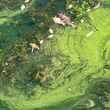
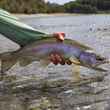








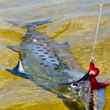

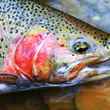
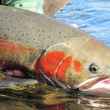
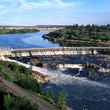




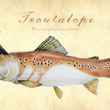
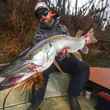





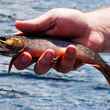
Comments
Micheal Graham replied on Permalink
Carp smokes well, if you treat it like an uncooked scaly ham. In fact, when done, it kinda looks like ham. Not to start an argument, but it turns out better than salmon, flank strips not flakes and is a whole lot more available.
Pages